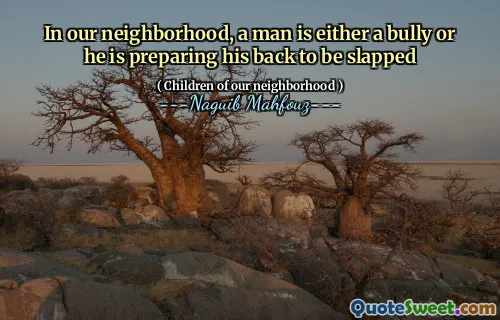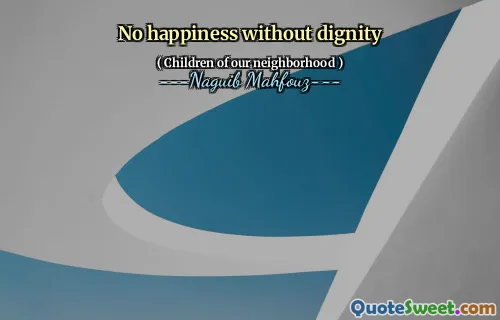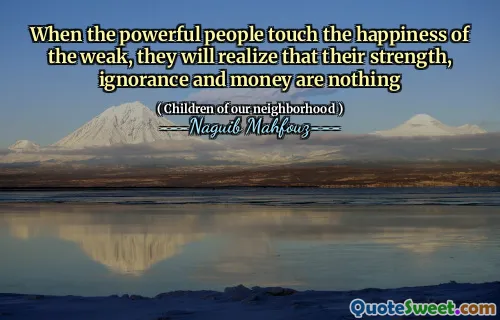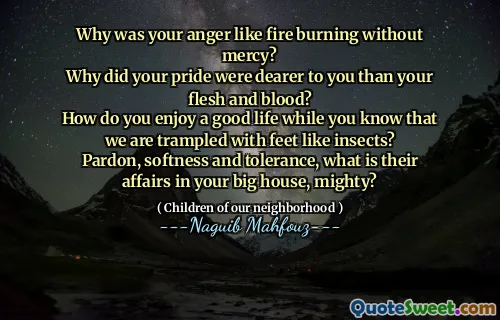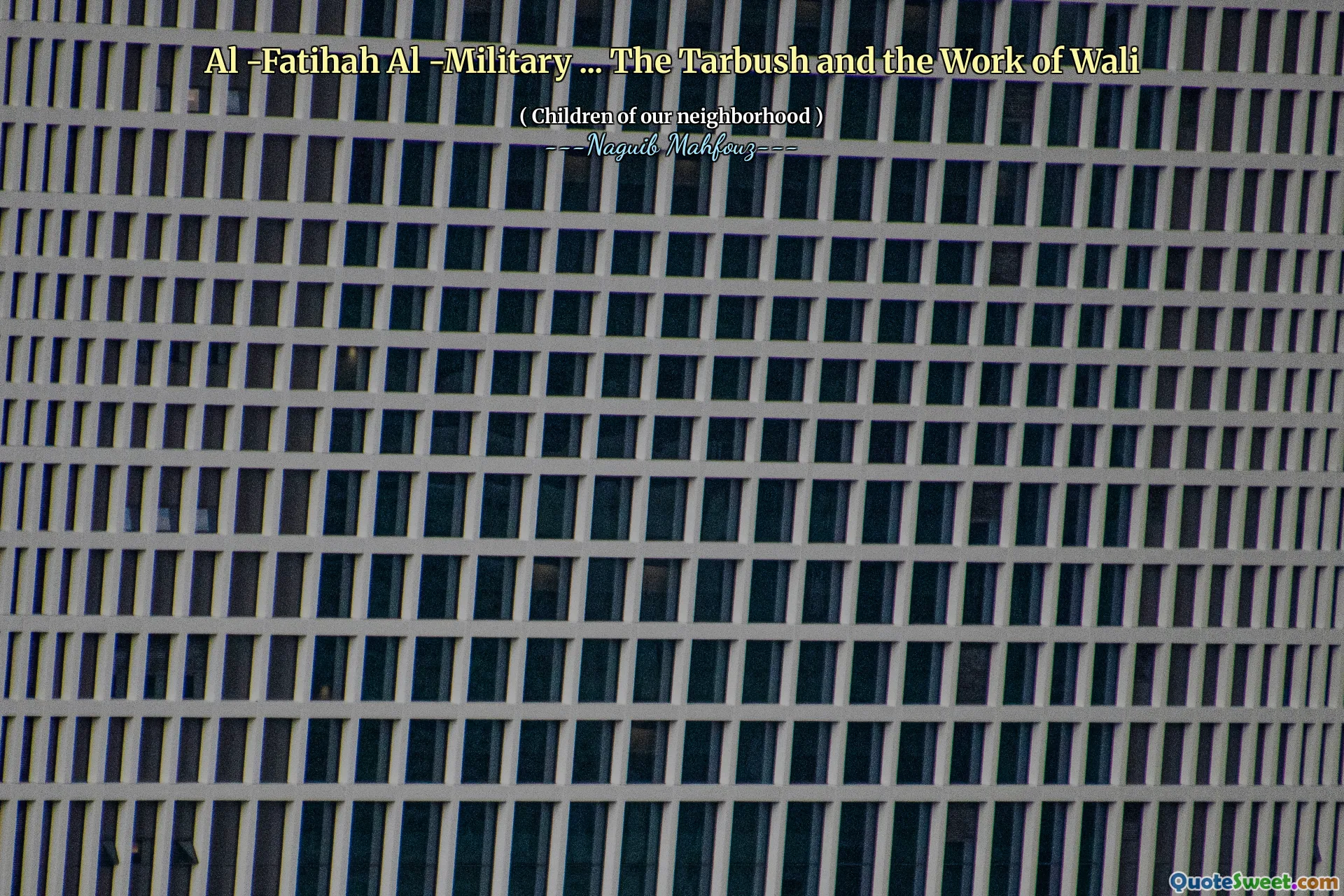
Al -Fatihah Al -Military ... The Tarbush and the Work of Wali
Naguib Mahfouz's work, "Children of Our Neighborhood," explores the lives of various characters in a community, highlighting their struggles, aspirations, and the social dynamics at play. Through vivid storytelling, Mahfouz paints a picture of everyday life, delving into personal and societal issues that resonate with readers. The narrative is rich with cultural references and philosophical reflections that invite contemplation about the human condition.
The book also makes use of symbolic elements, such as the Tarbush, to represent tradition and identity among the characters. Additionally, Mahfouz draws on themes from religious texts like Al-Fatihah to emphasize spiritual connections and moral dilemmas faced by the individuals within the neighborhood, showcasing how faith influences their lives and decisions. The intertwining of personal and communal narratives makes for a compelling exploration of life within a cultural microcosm.

